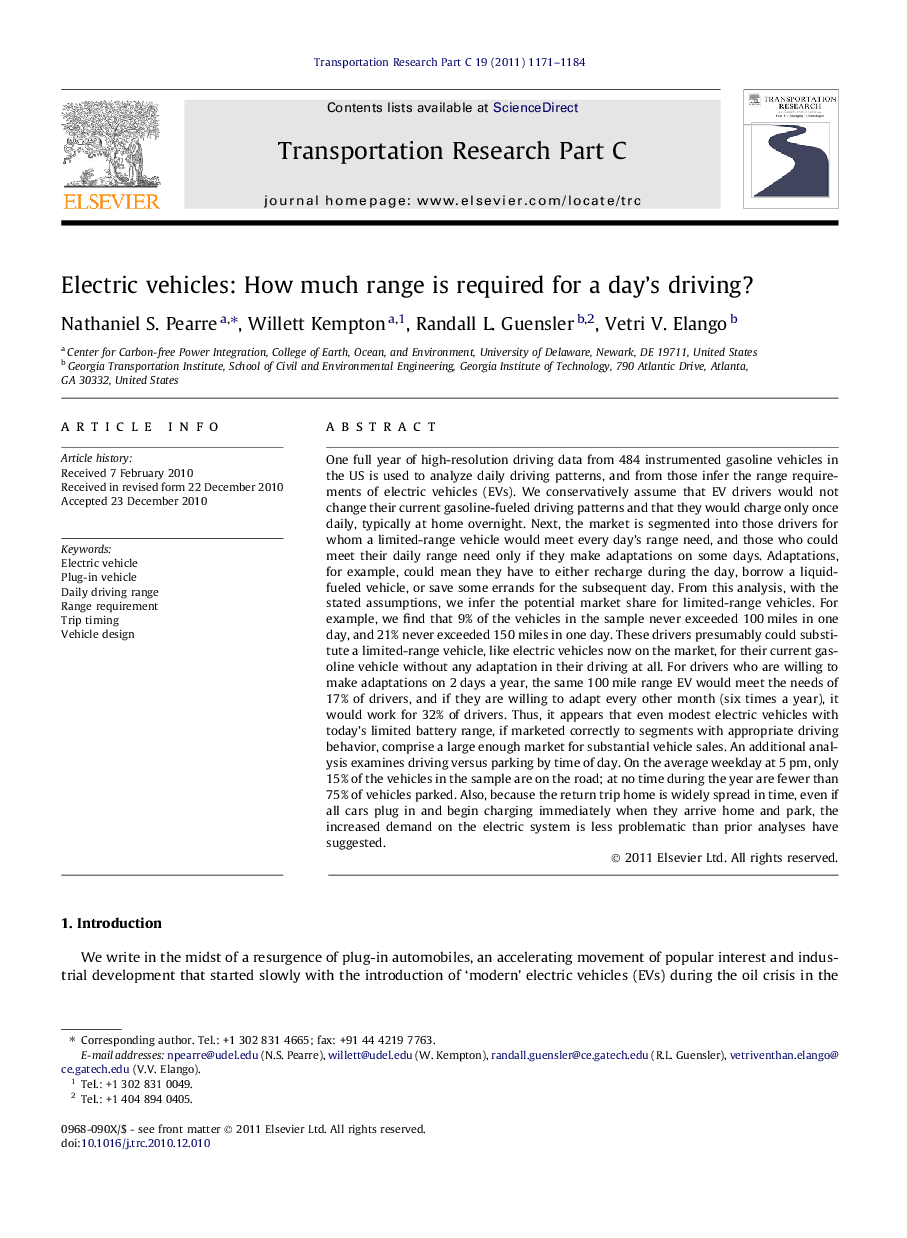| Article ID | Journal | Published Year | Pages | File Type |
|---|---|---|---|---|
| 525242 | Transportation Research Part C: Emerging Technologies | 2011 | 14 Pages |
One full year of high-resolution driving data from 484 instrumented gasoline vehicles in the US is used to analyze daily driving patterns, and from those infer the range requirements of electric vehicles (EVs). We conservatively assume that EV drivers would not change their current gasoline-fueled driving patterns and that they would charge only once daily, typically at home overnight. Next, the market is segmented into those drivers for whom a limited-range vehicle would meet every day’s range need, and those who could meet their daily range need only if they make adaptations on some days. Adaptations, for example, could mean they have to either recharge during the day, borrow a liquid-fueled vehicle, or save some errands for the subsequent day. From this analysis, with the stated assumptions, we infer the potential market share for limited-range vehicles. For example, we find that 9% of the vehicles in the sample never exceeded 100 miles in one day, and 21% never exceeded 150 miles in one day. These drivers presumably could substitute a limited-range vehicle, like electric vehicles now on the market, for their current gasoline vehicle without any adaptation in their driving at all. For drivers who are willing to make adaptations on 2 days a year, the same 100 mile range EV would meet the needs of 17% of drivers, and if they are willing to adapt every other month (six times a year), it would work for 32% of drivers. Thus, it appears that even modest electric vehicles with today’s limited battery range, if marketed correctly to segments with appropriate driving behavior, comprise a large enough market for substantial vehicle sales. An additional analysis examines driving versus parking by time of day. On the average weekday at 5 pm, only 15% of the vehicles in the sample are on the road; at no time during the year are fewer than 75% of vehicles parked. Also, because the return trip home is widely spread in time, even if all cars plug in and begin charging immediately when they arrive home and park, the increased demand on the electric system is less problematic than prior analyses have suggested.
Research highlights► Nine percent of vehicles never exceed 100 miles driving in one day. ► Travel adaptation 2 days/year makes 100 mile EVs substitutable for 17% of drivers. ► Correlation of vehicle frequency of use to distance travelled when used is weak. ► In the worst 1-h span of rush-hour, <4% of the vehicle fleet parks.
